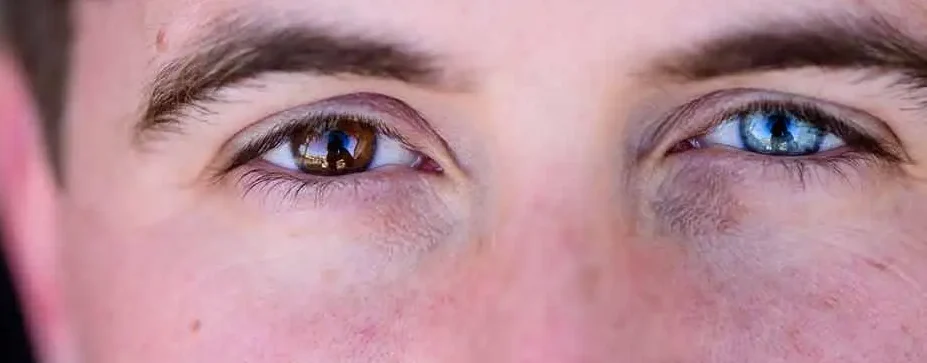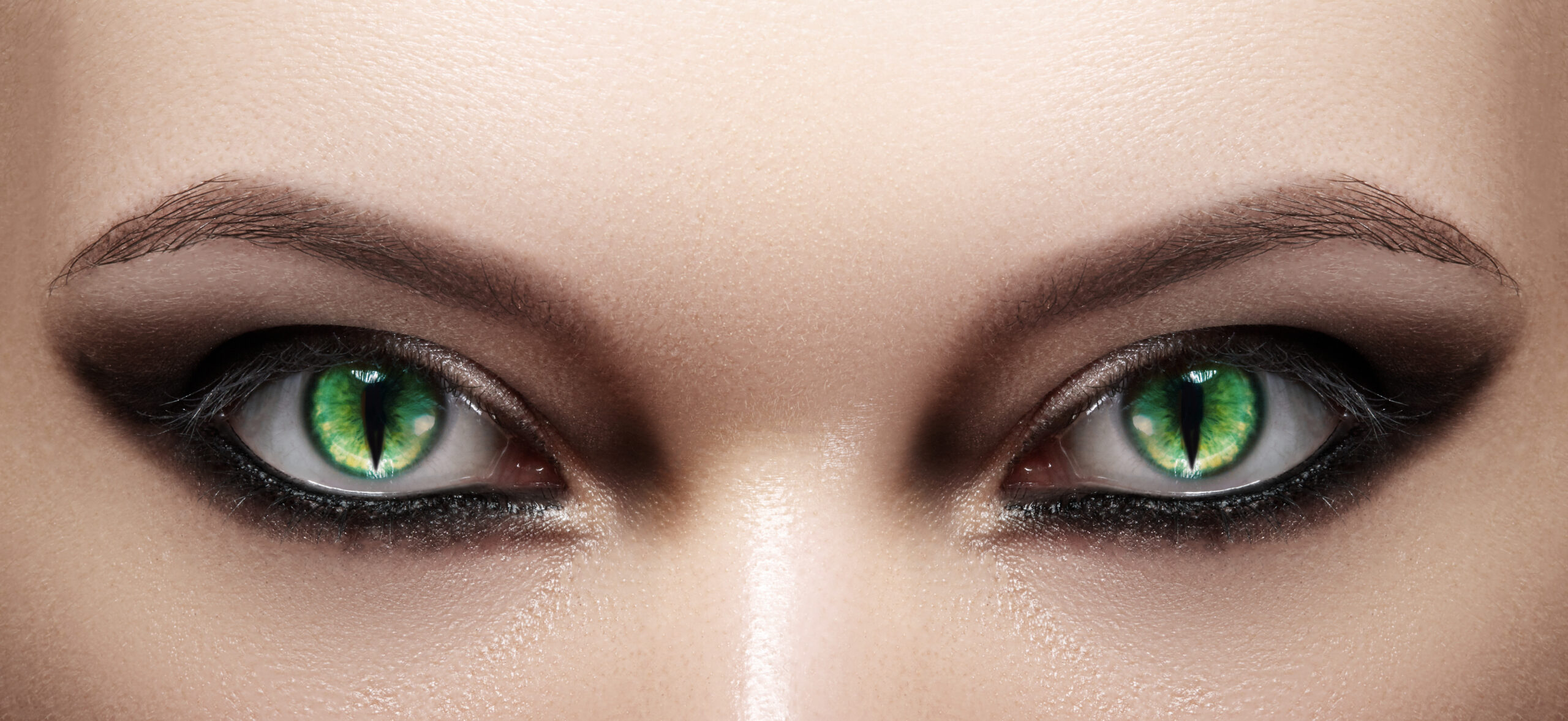What is Heterochromia?

Heterochromia occurs when the iris (coloured tissue at the front of the eye) of both your eyes are of different colours. Although mostly harmless, heterochromia can sometimes indicate an underlying medical condition. For example, one eye is brown and the other eye is green. It can also mean there are at least two different colors in parts of one eye or both eyes.
What causes Heterochromia?
A genetic mutation is believed to cause almost all congenital forms of heterochromia. The mutation is benign, meaning that it doesn’t relate to an underlying disease or illness and won’t cause any harm. This random genetic “surprise” affects the melanin levels in different parts of the iris(es). Of the common eye colors, brown eyes have the most melanin and blue eyes have the least. Animals can have heterochromia, too. At some point, you’ve probably noticed a Siberian husky, Australian shepherd or border collie with two different-colored eyes. Along with other domestic animals, these dogs experience the same genetic phenomenon as humans. There are many reasons for heterochromia. You can be born with the condition or develop it right after birth. Most children born with the condition will not have any other problems with their eyes or general health. In some cases, the condition can indicate another underlying medical condition.
Heterochromia in infants can be due to:
- Horner’s syndrome (caused by disruption of a nerve pathway from the brain to the face and eye on one side of the body)
- Piebaldism (absence of cells in certain areas of the skin and hair)
- Hirschsprung disease (birth defect in which some cells are missing in the large intestine)
- von Recklinghausen disease (development of multiple non-cancerous tumors of nerves and skin and areas of abnormal pigmentation)
- Bourneville disease (multiple benign tumors of the embryonic ectoderm, for example, skin, eyes and nervous system)
- Parry-Romberg syndrome (a condition where the tissue of one side of the face gradually wastes away)
Less commonly, heterochromia can occur later in life due to disease, injury or the use of certain medications. This is called acquired heterochromia and may be the result of:
- Eye injury
- Eye surgery
- Uveitis
- Glaucoma
- Glaucoma medication
- Diabetes
- Eye tumors (benign or cancerous)
- Central retinal vein occlusion (CRVO)
Types and symptoms of Heterochromia
There are three types of heterochromia and each type has its own unique visual traits.
- Complete heterochromia (heterochromia iridis) happens when one iris is of a different colour than the other. When you have this condition, you may have one blue eye and one green eye.
- Segmental heterochromia (heterochromia iridum) is a condition whereby different parts of one iris are different colours
- Central heterochromia happens when the outer ring of your iris has a different color from the rest of it.
How is Heterochromia diagnosed?
Since most lifelong cases of heterochromia aren’t harmful, they won’t need to be diagnosed by a doctor. When a baby is born with heterochromia, their doctor may recommend having an ophthalmologist look at their eyes. This is a normal process and not a cause for concern and is only used to rule out any rare conditions. When heterochromia occurs or changes later in life, an eye doctor will need to perform a comprehensive eye exam.
How is Heterochromia treated?
Heterochromia is usually a harmless genetic trait and in these cases, it doesn’t need to be treated. If a medical professional has determined that your heterochromia is due to an underlying condition or illness, treatment may be needed. Treatment for heterochromia focuses on addressing the underlying causes of the condition. If there are no other issues with the eyes, treatment may not be essential. A comprehensive eye check-up is extremely important to detect eye conditions. Speak to your doctor about any questions you may have regarding developing a treatment plan.
Heterochromia FAQs
Q: Is having heterochromia, or different-colored eyes, a bad thing?
A: Not usually, but it depends on the cause. Congenital heterochromia is usually harmless and rarely reflects an underlying illness. However, acquired heterochromia may be caused by certain glaucoma eye drops, eye injury or disease, and it can reveal a problem. If you notice a rapid change in your eye color, see an eye doctor.
Q: Is heterochromia more common in males or females?
A: Heterochromia is more common in females than in males based on a study performed several decades ago in Austria.
Q: What’s the difference between central heterochromia and hazel eyes?
A: An eye with central heterochromia has one distinct color around the pupil and a different color toward the outer edge of the iris. Hazel eyes are a mixture of different colors throughout the entire surface of the iris. For example, central heterochromia looks more like a target with multiple rings of color and hazel looks more like confetti.
Q: Can heterochromia change the size of your pupils?
No, heterochromia does not affect pupil size. If someone with heterochromia has differently sized pupils, they have a separate condition called anisocoria.
Q: What’s the difference between heterochromia iridum and heterochromia iridis?
Nothing. They’re just two different names for heterochromia when it affects the iris(es). Since other forms of heterochromia can affect the skin and hair, attaching iridum or iridis clarifies that only the eyes are affected.


